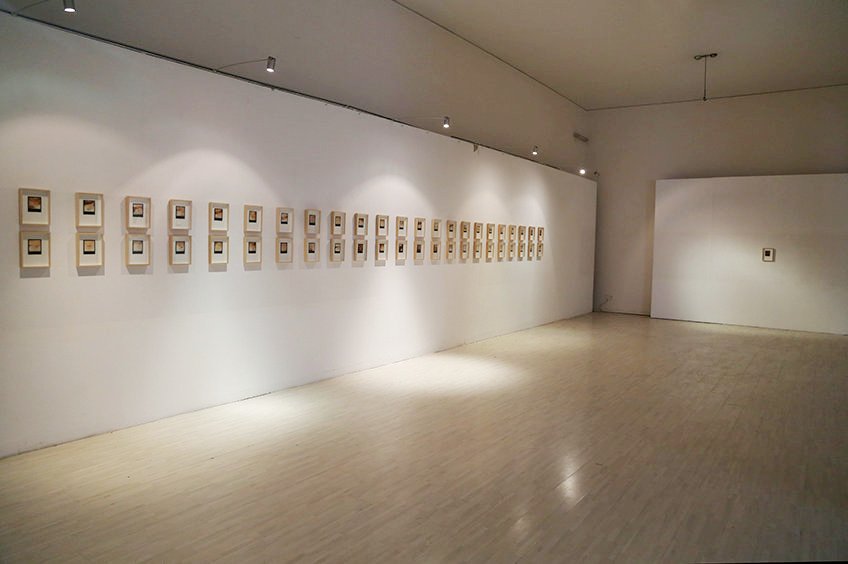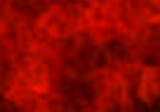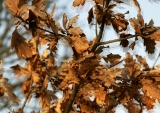Works

landscape soundscape
ina otzko . alois späth
This double exhibition brings the landscape photographs of Norwegian artist Ina Otzko, who has now made southern Italy her home, together with those of Berlin sound artist Alois Späth. Whereas Otzko, in her project LEVIATHAN, approaches a sleeping volcano by means of Polaroid photography and enters into a discourse about man’s civilizing responsibility toward natural resources, Späth makes use of pictures of water and a tree as an opportunity for an aesthetic reinterpretation of that which is found at hand.
20 June 2017 – 29 July 2017
On 20 June beginning at 7 p.m. all are invited to the opening reception at the gallery. The zither duo Sarah and Tabea Wurmer, Munich, will be performing the compositio „spheres & associations“ by Alois Späth for zither and elektronics. The artist Alois Späth will be present.
The following works are presented in the show:
landscape soundscape
The basic material for the exhibited 21 fine art prints from the Series LEVIATHAN by Ina Otzko is the complete series of 78 framed (25 x 20 cm) Unique Polaroid 600.
The photographic approach is dedicated to the crater of the dormant Vulcano Solfatara located within the Regional Park of Campi Flegrei in the municipality of Pozzuoli, north of Naples.
“Truth also is the pursuit of it: Like happiness, and it will not stand. Even the verse begins to eat away In the acid. Pursuit, pursuit; A wind moves a little, Moving in a circle, very cold. How shall we say? In ordinary discourse — We must talk now. I am no longer sure of the words, The clockwork of the world. What is inexplicable Is the ‘preponderance of objects,’ The sky lights Daily with that predominance And we have become the present. We must talk now. Fear Is fear. But we abandon one another.” Leviathan, From New Collected Poems by George Oppen (1908–1984).
The project Leviathan looks at the challenging position of our shared responsibility in the sustainability of life versus the increased corporate and private ownership of Earth’s assets. Social hierarchy and financial power appear to separate us more than ever as deplenishing resources inversely counter the number of human beings on our planet. It begs the question: Does Earth need human beings? If the answer is positive, then how can we change our supposedly inevitable course to enable survival? “What happens to us may depend upon three causes: upon accident, upon fate, upon free will” suggests Gurdjieff in Ouspensky’s In Search of the Miraculous.
The more fine-tuned our body is, the more deeply we perceive ourselves and others. With endless access and aggressive use of available digital information, what makes us choose one thought or deed over another? On another level, how does power and freedom (which don’t often sit well together) challenge our contemporary and social responsibilities at the same time as glossing over the contradictions between the sustainability of human life and nature’s ecosystems? Furthermore, how do our thoughts affect our identity, behaviour and the inherent individual responsibility we have vis a vis our surroundings?
With the exception of the sound for the piece Mein Herz Es Dampft, Alois Späth doesn’t present any sound, sound installation or musical composition: he offers only purely visual art. Thus Späth is stepping out from the cycle of what is expected of him as a sound artist, just as he does a zig zag out of the loop of self-definition from a planned change in direction.
After “still-caught-in-a-loop” mirroring– and repetition techniques were used to obtain an abstract motif in the picture Götter, the technique and the form – and thereby the content that the picture communicates – changes in Baum(Sequenz) and Welle (Triptychon):
In Baum(Sequenz), four photos of the same framing of branches moving in the wind are lain on top of one another – and the condensed moment of a video recording is created. It is, however, not a timeless moment: the movement – unlike in his sound installations – does not circulate and has been artificially/artistically enclosed. The form breaks out; movements branch off in different directions and thereby virtually compress the broad, light blue expanse of the sky into a flat, light blue surface or wall.
The piece Welle (Triptychon) combines three photographs, each of which shows a section of a dam. Seen individually, the three pictures are unaltered nature photographs. Combined as a triptych and through their conscious placement within this triptych, however, the artistic intervention can be recognized. The artist is concerned with form, with continuation, with repetition or non-repetition (by deviation) of form, and lets the images themselves reflect on these phenomena through their own rhythm and the concentration and equalization of the wave lines in them. This process occurs in front of a black background, and its closeness to audio waveforms, and thereby to sound, is not difficult to recognize.

